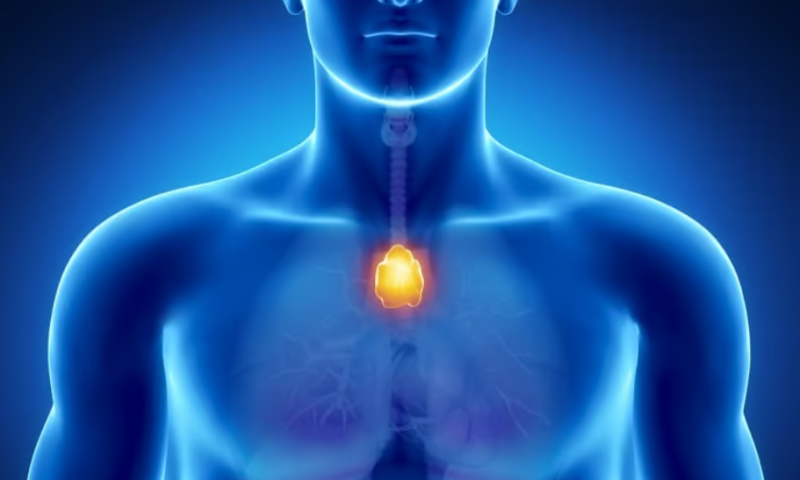The thymus is one of the most important organs you probably don’t think about. Positioned below the breastbone at the top of the chest, it facilitates the adaptive immune response by producing T cells that launch attacks against invaders. Unfortunately, it degrades with age and some diseases, taking with it one’s ability to fight off infection.
Now, for the first time, scientists from the University of Florida have grown functional thymus organoids from human stem cells. Though the work is only in the proof-of-concept stage, the “mini-organs” could help develop patient-specific therapies for treating thymic dysfunction.
“An experimental model system to interrogate the mechanisms of thymic insufficiency and function is necessary and could serve to further the development of cell-based therapies for thymic defects,” senior author Holger Russ, Ph.D., said in a press release.
Scientists have been building thymus organoids for years using animal models. They have even grown and transplanted whole thymus glands in mice. Yet, no one has developed some from human cells that are capable of holistically recapitulating the organ’s functions. A model developed in 2014 could produce T cells, but the cells it created didn’t undergo negative selection, an important process where new T cells that might react to a host’s own tissue are eliminated.
In contrast, the T cells generated by Russ lab’s organoids develop in a way that’s truer to the function of a real human thymus. In the results of a paper published March 23 in Stem Cell Reports, they described how they built the organoids, starting by growing thymic epithelial progenitor cells—or TEPs, precursor cells to T cells—from human stem cells. The TEPs were combined with stem cell-derived blood cell precursors and mesenchymal cells. This would enable them to develop into thymic epithelial cells, or TECs, which with the help of TEPs differentiate into T cells, chemokines and other cell types.
After combining the cells together, the team studied how the organoids developed and produced TECs. They then searched and identified markers of T cells, along with natural killer cells and other immune cells that develop in the thymus and compared them to human samples. They also showed T cells were able to proliferate in response to a stimulus, though at lower levels than controls.
Finally, to see if the organoids had the self-regulation capabilities of a real thymus, the scientists looked for markers of negative selection and T regulatory cell, or T reg, production. T regs are a specialized population of T cells that attacks wayward T cells and cytokines that would otherwise cause autoimmunity. The organoids came through: Their cells expressed markers of both negative selection and T-reg development, albeit at low levels, the scientists noted.
The team will work on improving the model’s ability to perform negative selection and T-reg production, along with other things. Advances in blood cell precursor generation from stem cells should further improve its utility, according to the paper. Meanwhile, scientists have been working on other ways to study how T cells develop in the thymus, including a “cell atlas” that tracks how the organ’s cells change over time.

